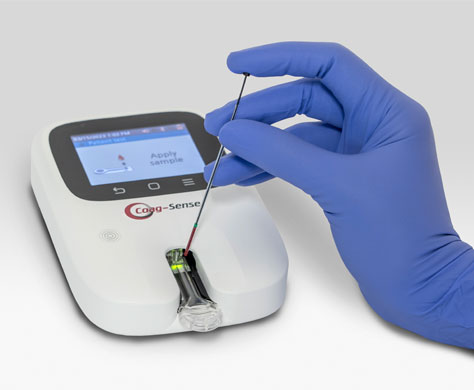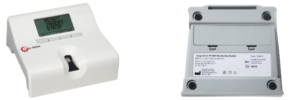What is a PT/INR Meter?
A PT/INR meter is a portable unit used to manage anticoagulation for patients on warfarin. The meter will test a patient blood sample using test strips designed specifically for the unit. Using a lancet, a blood sample is obtained from a fingerstick and applied to the test strip. The meter reads the test strip and measures the length of time for the blood to clot. The result is reported in International Normalized Ratio (INR) units and Prothrombin (PT) seconds. These results are used by patients and physicians to determine an appropriate warfarin dose.
For a portable meter option that is twice as accurate and precise, discover the Coag-Sense® PT/INR Monitoring System.
What is warfarin and why is it prescribed?
Warfarin (generic for brand names Coumadin and Jantoven) is a blood thinner prescribed to prevent and treat blood clots. Warfarin therapy may be prescribed for patients with
- certain types of irregular heartbeat
- blood clots in the legs or lungs
- with medical device implants such as artificial heart valves
A patient’s warfarin dose depends upon many factors including age, overall health, and genetic makeup. The dose may also need adjustment based on a patient’s diet and current medications.
Why is it important to monitor warfarin?
Warfarin is monitored to ensure it is working effectively and being used safely. Achieving the correct warfarin dosage can sometimes be challenging. The dose of warfarin and its efficacy can be monitored by testing blood from a fingerstick with an INR test meter. INR test meters may be prescribed to patients for use in the home or used by providers at the point of care in a health care setting.
The frequency required to monitor warfarin and the results expected will be based on recommendations from the patient’s health care provider. Typically, an INR target range is between 2.0 and 3.0 for basic blood-thinning needs. However, the range may vary based on the specific conditions of a patient. The objective is to maintain the patient in the target therapeutic range more than 70% of the time. An INR above the patient-specific target range may increase the risk of bleeding, while an INR below the target range may increase the risk of developing a blood clot. Patients should work with their health care provider to develop a plan for achieving and maintaining a target INR. It is also important to recognize when there is a problem and to know when to contact their health care provider.



